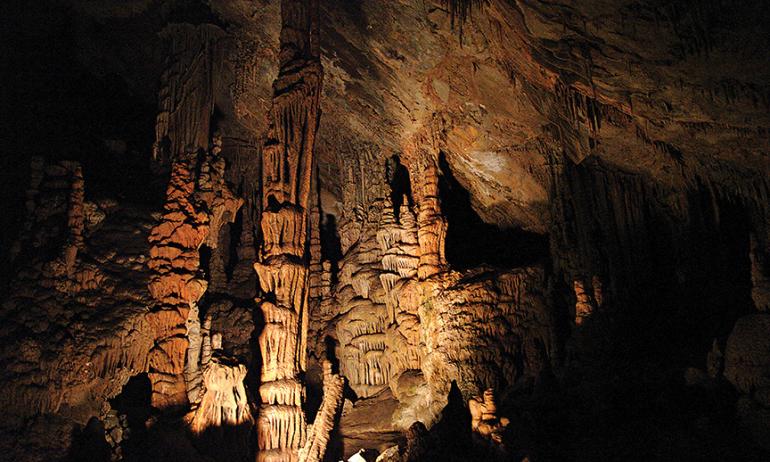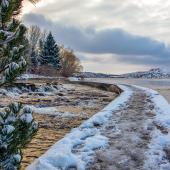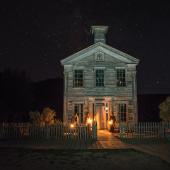Hidden Treasure
The geology of Lewis & Clark Caverns.
Gorgeous panoramas and abundant wildlife have drawn many to Montana; however, the Treasure State has much to offer below ground, as well. The most beautifully colored and whimsically shaped sub-terrestrial attraction is Lewis & Clark Caverns, Montana’s oldest state park. The limestone caves boast an extensive variety of Alice in Wonderland–like formations: castles galore, tilted wedding cakes, popcorn, stone waterfalls, bacon ribbons, and more.
Legend has it that in the 1800s, Native Americans talked of a very large cave. In 1882, two men from Whitehall were actively trying to determine if this was an actual place, when they stumbled upon the opening, and consequently determined to keep the cave a secret. Thus, two ranchers—Tom Williams and Bert Pannell—are credited with the discovery of the cave in the winter of 1892. They were drawn to what appeared to be smoke, but was actually warmer air rising from the cave’s mouth. It’s rumored that they listened to the echoes of a dropped stone and promised to return. Little did they know what beauty was hidden below.
Millions of years ago, when the Rocky Mountains were formed, the horizontal limestone layers were crumpled, tilted on edge, and shoved upward. Huge quantities of water flowed through the limestone, dissolving the weak rock and creating mostly-vertical cave rooms. While the creation of the caves was violent and tumultuous, the beauty within the caves formed one drop at a time. Slightly acidic water percolated through cracks, dissolving and collecting calcite as it flowed, until it seeped through the top of a cave. As the water evaporated or gas escaped, the calcite would redeposit into limestone formations, dripstones and flowstones. Dripstones consist of stalactites which hang from the cave ceiling and form similarly to icicles, and stalagmites which are like narrow teeth rising from the cave floor. If the two connect, they form a column. Flowstones are formed when water actively flows down walls or over the cave floor, creating the appearance of drapes or curtains. Different minerals in the solution create different colors (white, cream, rose, grey), thus the appearance of “cave bacon.”
The caverns are now available for all to enjoy. Fossils can be seen on the side of the hill while walking the short distance to the cave entrance. Since the caves remain a consistent 50 degrees, light jackets are recommended. Shoes with good traction are a must for the often-damp floors and 600 stairs that you’ll traverse in the two-hour guided tour. If you’re lucky, you’ll see the bats that call the cave home, female western big-eared bats; male bats reside in other caves. The tour consists of an entertaining procession of bending, stooping, butt-scooting, and shimmying, but it’s all worth it once you enter the cave rooms—expect uncontrolled gasping and dropping jaws. The beauty and quirkiness of the formations are impressive, making Lewis & Clark Caverns truly a delightful Montana treasure and a must-see for geology fans.
Patti Albrecht owns Earth’s Treasures in Bozeman.










